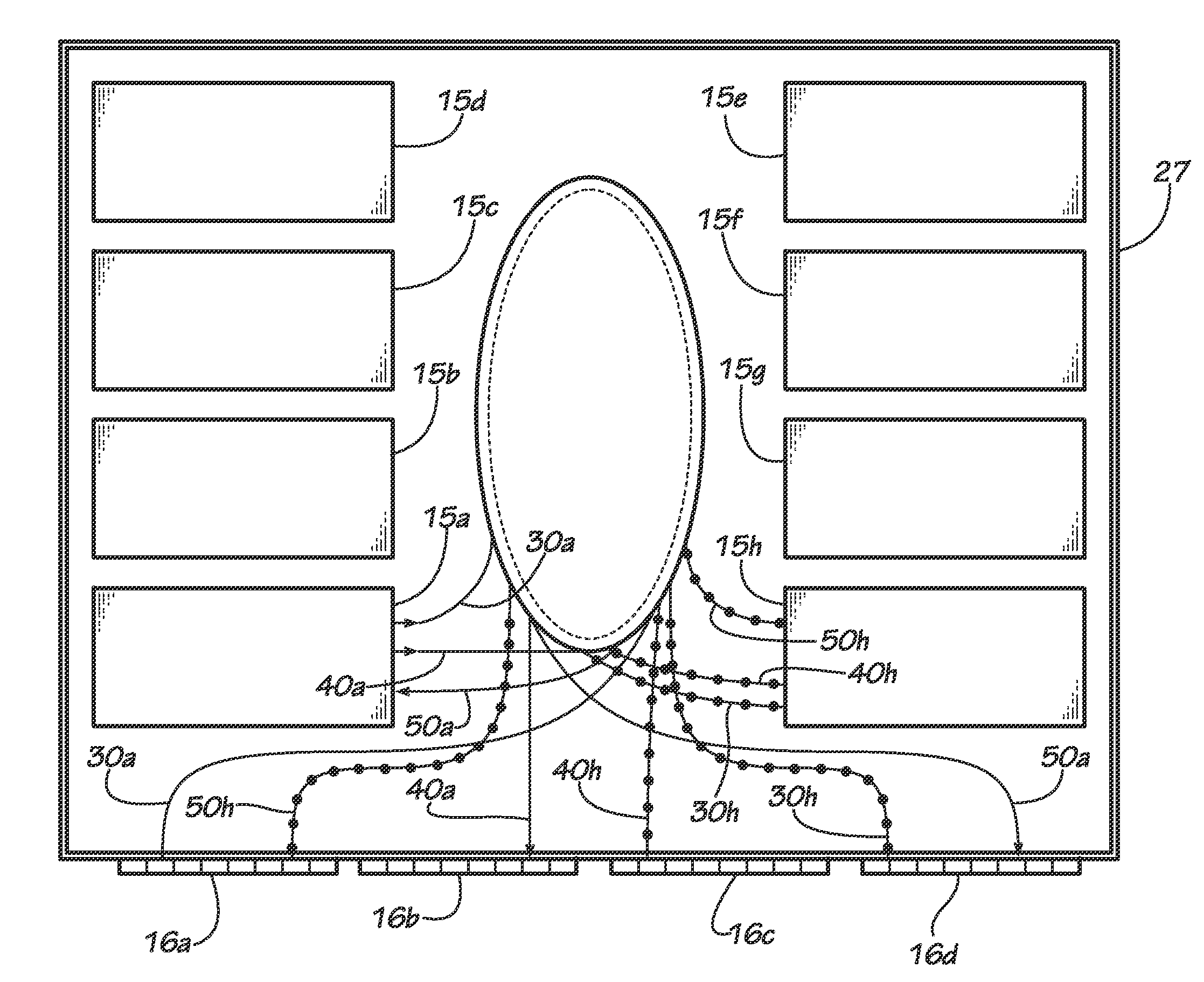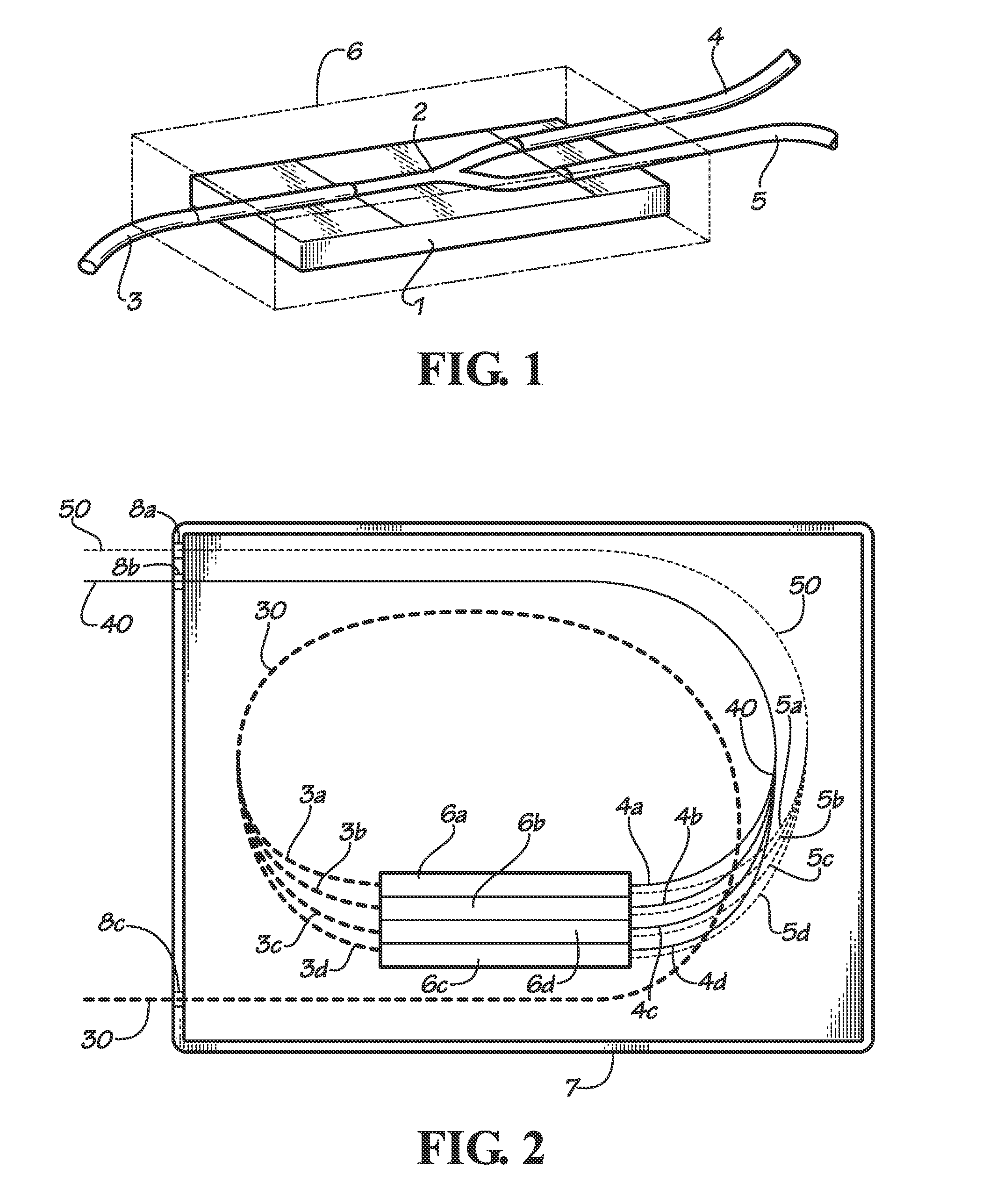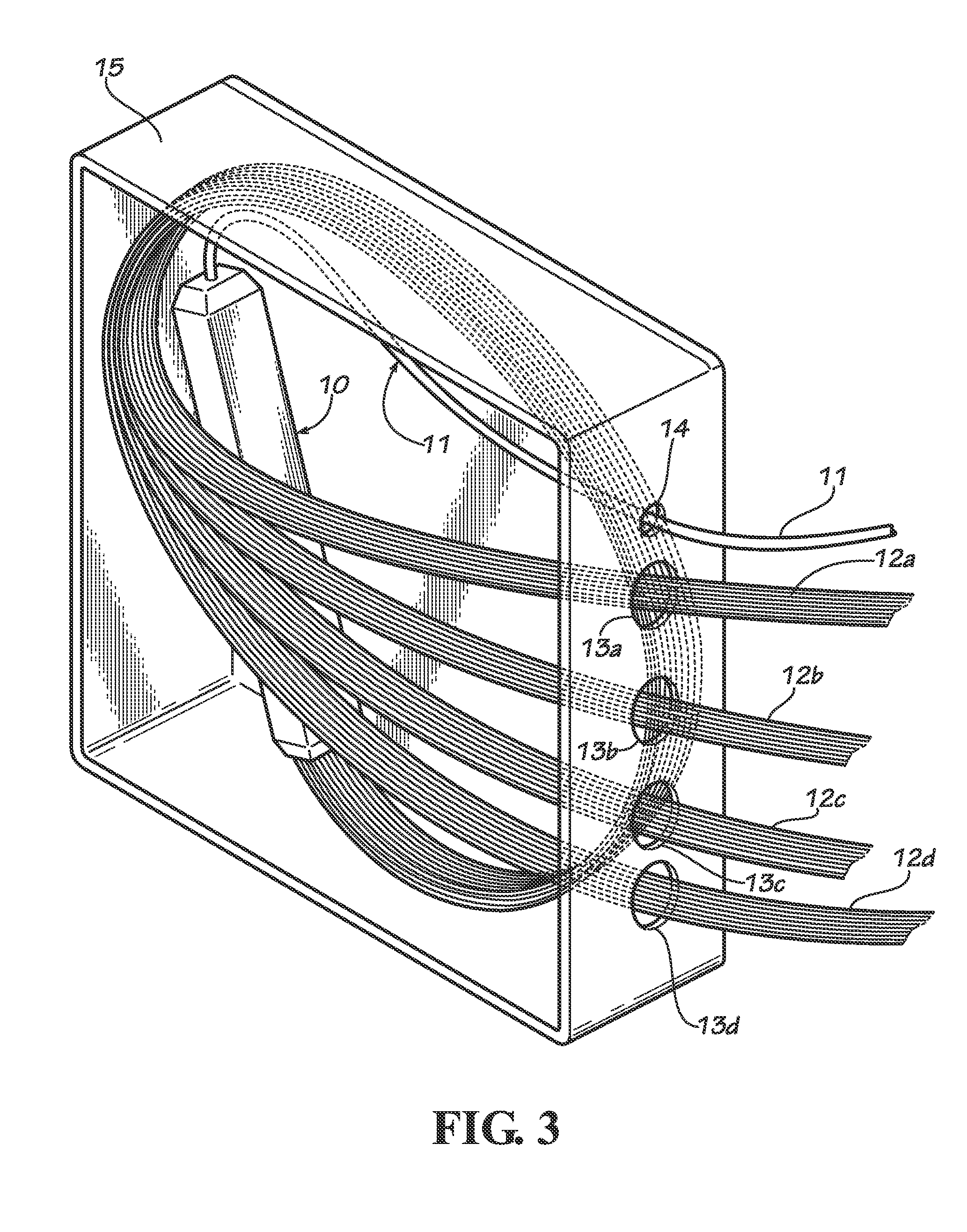High density enclosure for optical modules
a technology of optical modules and enclosures, applied in the field of high density enclosures for optical modules, can solve the problems of limited density using lgx enclosures, or any existing proprietary enclosures that are similar, and the design of optical component enclosures using the lgx standard and related proprietary equipment enclosures is limited, so as to achieve high density and performance. high, the effect of improving density
- Summary
- Abstract
- Description
- Claims
- Application Information
AI Technical Summary
Problems solved by technology
Method used
Image
Examples
Embodiment Construction
[0020]With reference to the attached drawings, embodiments of the present invention will be described below.
[0021]FIG. 1 shows the basic construction of a typical optical tap made using planar lightwave circuit (PLC) technology. The optical circuit is formed on substrate 1 that is a polished wafer of pure fused silica or a wafer of semiconductor silicon covered on its top side with the deposition of a relatively thick layer of pure silicon dioxide (SiO2) that is approximately 20 microns thick. On the very top of substrate 1 there is a second deposited layer of doped silica glass that is approximately 7 microns thick that has been patterned using techniques similar to semiconductor processing. The refractive index of this deposited layer is approximately 0.3% greater than that of pure fused silica. In the case of the optical tap, after processing, the remaining doped layer of silica glass has been reduced to a relatively simple “Y” shape 2 as shown in FIG. 1. This serves as a planar ...
PUM
 Login to view more
Login to view more Abstract
Description
Claims
Application Information
 Login to view more
Login to view more - R&D Engineer
- R&D Manager
- IP Professional
- Industry Leading Data Capabilities
- Powerful AI technology
- Patent DNA Extraction
Browse by: Latest US Patents, China's latest patents, Technical Efficacy Thesaurus, Application Domain, Technology Topic.
© 2024 PatSnap. All rights reserved.Legal|Privacy policy|Modern Slavery Act Transparency Statement|Sitemap



